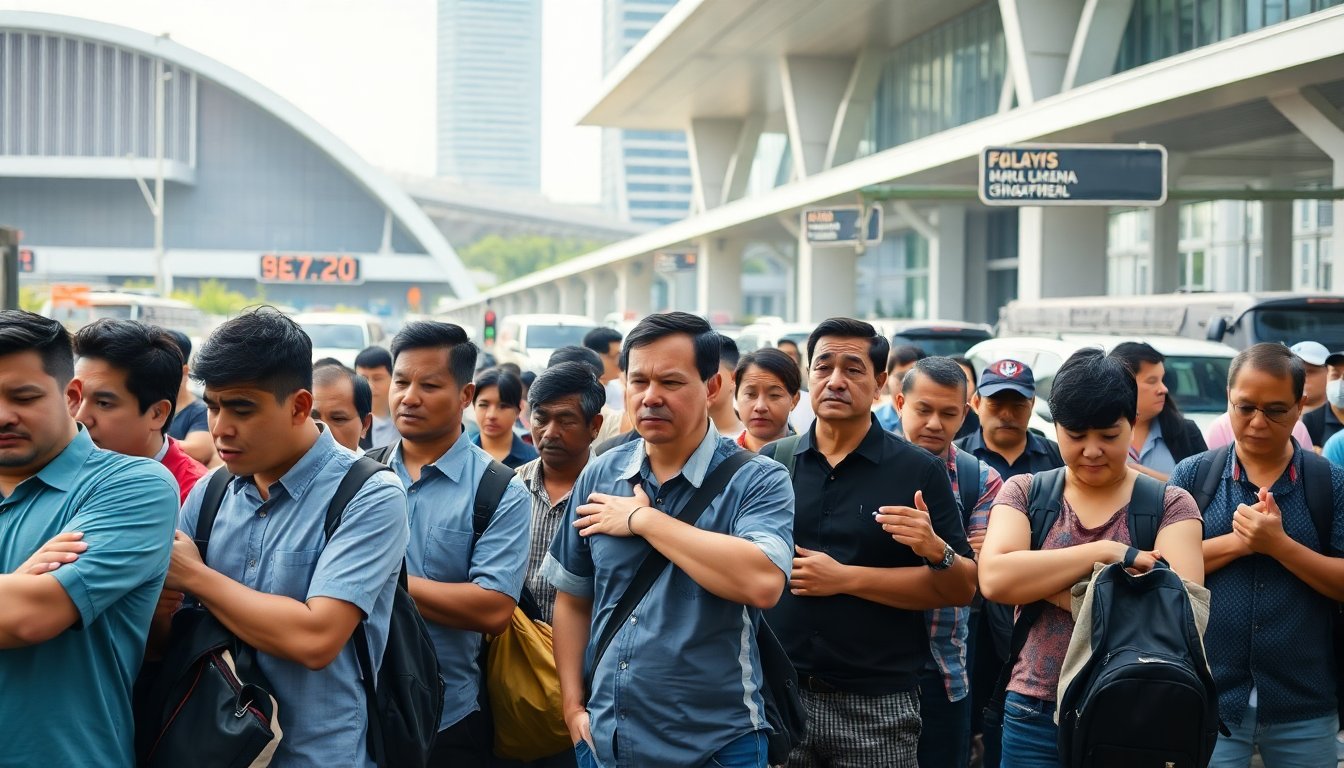Table of Contents
Rising tensions at the Malaysia-Singapore border
The border between Malaysia and Singapore experiences frequent congestion, with thousands of individuals crossing daily. A recent incident has highlighted the challenges faced by commuters at this vital transit point. A video capturing a physical altercation between two individuals in the bus queue has gained significant attention, illustrating the frustrations stemming from persistent traffic delays.
This 14-second footage emerged shortly after the incident, showing a man and a woman engaged in a struggle near the bus bays at the Johor Bahru terminal. Such confrontations are indicative of the heightened stress that can occur as travelers navigate long lines and extended waiting periods.
The daily struggle at the border
The Johor Bahru border terminal serves as a major crossing point in Southeast Asia, with hundreds of thousands commuting between Malaysia and Singapore each day. This heavy traffic contributes to the chronic congestion that has impacted the area for years. Despite various initiatives aimed at improving traffic flow and reducing wait times, demand continues to exceed the available infrastructure.
Travelers have grown accustomed to enduring lengthy waits, often spending hours in line to cross the border. As the number of commuters rises, so does frustration, increasing the likelihood of incidents such as the recent bus queue altercation. The video of this incident not only captures the confrontation but also reflects the deeper tensions stemming from an uncomfortable transit experience.
Underlying causes of congestion
Traffic problems at the Malaysia-Singapore crossing stem from multiple factors. The infrastructure at the border frequently becomes overwhelmed by the high volume of travelers. Additionally, the Customs and Immigration processes can be lengthy, as thorough inspections and mandatory checks contribute to significant delays.
Peak travel times, particularly on weekends and holidays, further intensify these issues. Many Malaysians and Singaporeans cross the border for work or leisure, leading to substantial bottlenecks. Consequently, the frustrations experienced by commuters can result in unfortunate incidents, as evidenced by a recent viral occurrence.
Public reactions and potential solutions
The public’s response to the brawl has been varied. Many individuals have expressed sympathy for the commuters involved, while recognizing that these frustrations stem from systemic issues at the border. Social media has emerged as a platform for discussing the need for improved travel conditions and potential solutions to alleviate pressure at this critical transit point.
Advocates have called for enhanced infrastructure development, proposing that expanding facilities or increasing the number of immigration counters could help reduce congestion. Additionally, some suggest implementing better crowd management strategies during peak hours to minimize wait times for travelers.
Long-term considerations
Short-term solutions may offer immediate relief, but tackling the root causes of congestion at the Malaysia-Singapore border necessitates long-term planning and investment. Policymakers need to address the increasing demand for cross-border travel and the urgent need for modernized facilities to manage this growth.
Furthermore, enhanced collaboration between the Malaysian and Singaporean governments could yield more effective traffic management strategies and shared resources. By joining forces, both nations can significantly improve the travel experience for their citizens and boost the efficiency of this vital crossing.
The recent brawl serves as a stark reminder that the frustrations experienced by commuters are not isolated incidents; they reflect a broader systemic issue. It is essential to implement measures that alleviate these challenges, ensuring a smoother crossing experience for all travelers between these two dynamic nations.


